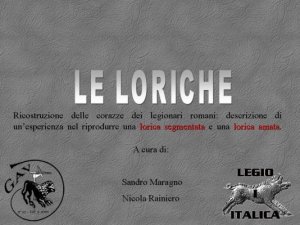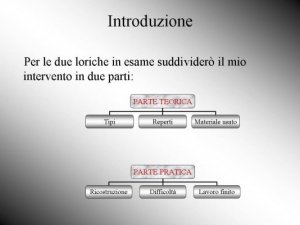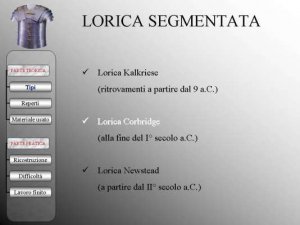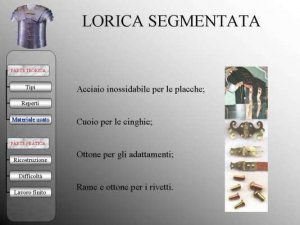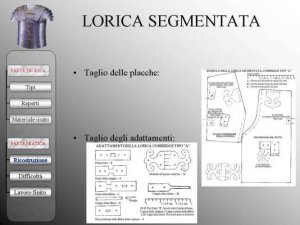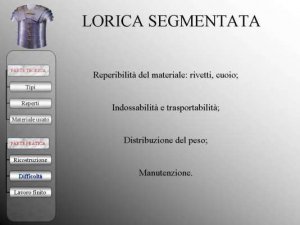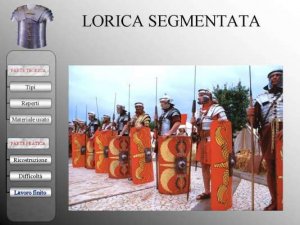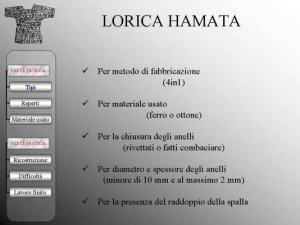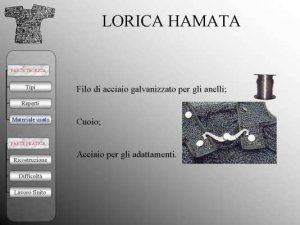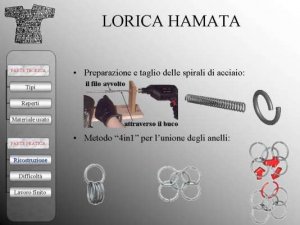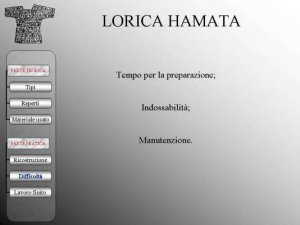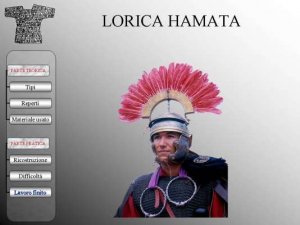Presence to a congress
In summer 2002 I have participated as a speaker in the 4th International Congress of Experimental Archaeology: "LET'S REDISCOVER THE LIFE OF ANCIENT ROMAN", developed during the usual Roman village festival. It follows a summary description of the experience and the introduced relationship.
Introduction^
Every year in Villadose is hold a Roman festival, called Market of Roman Century, that involves and dignifies this calm and little city.
To valorize the cultural value of the festival they are held usually one or two congress: the most important is the Congress of Experimental Archaeology. Usually the speakers are prestigious personality that introduce relationships on the technologies and the life of the ancient Romans and the whole first part of the conference is devoted to the art of the fight with relationships on army, cavalry and gladiatura.
It often happens however to make to also participate members of the local reenactement groups and in 2002 the GAV president has asked me if I could prepare together with the Arch. Sandro Maragno an intervention on:
Reconstruction of Roman legionary cuirasses and armours. Description of a reproduction of a "lorica segmentata" and a "lorica hamata"
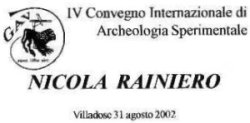 my pass
my passI have also accepted gladly because it was a matter that I knew and I wanted to deepen. For the preparation and layout of the relationship I have used part of the guides that I had realized for the group, anymore the acquired experience "on the field" from the GAV member Sandro Maragno, that had reconstructed, with the help of 2 blacksmiths Luciano Pavanello and Gigi De Agostini, 6 loricae segmentatae for I Italica group and 1 lorica hamata for personal fun.
So, I have been able to connect the theoretical part to the practice one and to produce a brief but complete relationship. Unfortunately Sandro Maragno has not been able to participate in the congress and therefore I have managed alone the intervention.
Slides^
I propose the original static slides projected in the congress, anymore the notes that I had written as slides comments.
Initial notes
Lorica segmentata^
|
In this slide I have brought two examples of remains that they are usually found in the archaeological sites. |
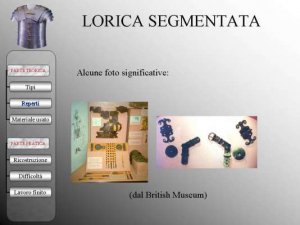 |
|
2) assemblage: folding and rivetting the parts previously cut. To do this we have departed from the shoulder plates and we have connected the others. |
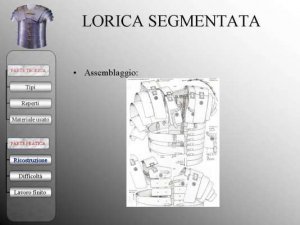 |
Lorica hamata^
|
In this slide I have inserted an exceptional find: a lorica hamta complete found in Britannia. |
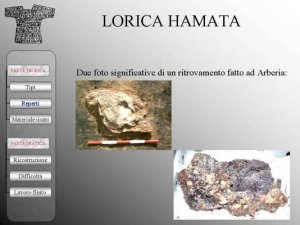 |
To conclude^
|
Paradoxically today it is easier to build a lorica segmentata rather than an hamata. Because it is easier to treat and to work the metal and it is had less time to disposition.
In the Roman age to manufacture a lorica hamata didn't constitute certain a difficulty because it didn't require an elevated metallurgy and the manpower it was nearly free.
Zip file with my presentation: convegno.zip (PowerPoint© format)
|
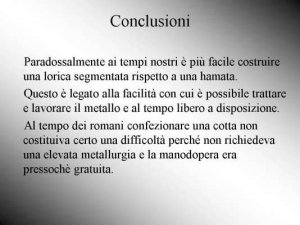 |
IV International Congress of Experimental Archaeology^
Villadose (RO), Europa room (in Foro Romano plaza)
|
LET'S REDISCOVER THE LIFE OF ANCIENT ROMAN Experimental archaeology aims to reconstruct, reproduce and experiment several aspects of the lives of the Ancients. During the Conference the subiect will be widely discussed in order to improve our knowledge of their lives. Either experimental topics or other subjects recalling the past will be discussed such as the reenactment with all its educational aspects, museums, archaelogical sites, the persistence and the influence of ancient techniques and customs on present everyday life. PROGRAMME Scheduled partecipations Karolina Tomic (Etnologa - Museo Archeologico di Sremska Mitrovica - (YUGOSLAVIA)) Giorgio Reggiani, Samuele Bernini (Gruppo Archeologico Ostigliese - Ostiglia (MN)) Vittorio Brizzi, Mauro Cesaretto (Museo dei Grandi Fiumi di Rovigo, Gruppo Archeologico di Villadose) Jasmina Davidovic, Miroslav Jesretic, Lazar Kostantinovic (Archeologi - Museo Archeologico di Sremska Mitrovica - (YUGOSLAVIA)) Antonella Nanni (Archeologa - PADOVA) Sandro Maragno, Nicola Rainiero (Gruppo Archeologico di Villadose) Clerence Gauthier (Eques Corpus Equestris Legionis X - Malagne la Gallo Romaine - Rochefort - (BELGIO)) Giampaolo Stella (Ceramista - Mestre ) Paola Montani (Archeologa - PADOVA) Cyril Catrou, Brice Lopez (Ars Dimicandi Francia - (MONTPELLIER)) Antonio Antonucci (Docente Istituto Agrario di Padova (PADOVA) Alessandra Toniolo (Archeologa - PADOVA) Representative of Archeopark of Malagne (la Gallo Romaine - Rochefort -B ) Museum and Archaelogical sites teaching (3 p.m.) 2nd session Angelo Nin Scolari (Compagnia di Teatro Continuo - PADOVA) Marta Zocchi (Gruppo Archeologico di Villadose - BADIA POL.) Lluis Pinol Masgoret, Magì Seritjiol (Archeologi - Museo Storico di Tarragona - SPAGNA) Persistence of ancient Roman customs on modern life (4 p.m.) 3rd session Alessandro Bonomini (Architetto - (PADOVA) Novica Vojnovic (Facoltà di Legge dell’università di Sarajevo - (BOSNIA-ERZEGOVINA)) Giovanni Di Pasquale (Museo di Storia della Scienza di Firenze - (FIRENZE) Alessandro Malato, Graziano Galvani (Compagnia delle Armi e delle Arti di Bologna - Nova Scrimia - (BOLOGNA)) Historical Reconstructions and Reenactment (5.30 p.m.) 4th session Luca Pizzocaro, Stefano Parancola (Sez. di Lotta Greco-Romana del Centro Universitario Sportivo - (PADOVA) Ulrich Sauerborn (Direttore museo di Aalen Germania) Guido Senesi, Enrico Maragno (Gruppo Archeologico di Villadose) Dario Battaglia (Istituto Ars Dimicandi) Mario Manzana (Redattore della rivista Costume - ARGENTA) Brice Lopez (Ars Dimicanfi Francia - (MONTPELLIER)) Eric Seritjiol (Gruppo Progetto Phoenix - TARRAGONA - SPAGNA) Workshops ( 5 p.m. in the square at break time) 7 p.m.: End of works
|
Sources^
- GAV, Press Release
Changelog^
- (30/08/2002) Congress version, in PowerPoint© format
- (27/08/2005) First web version






